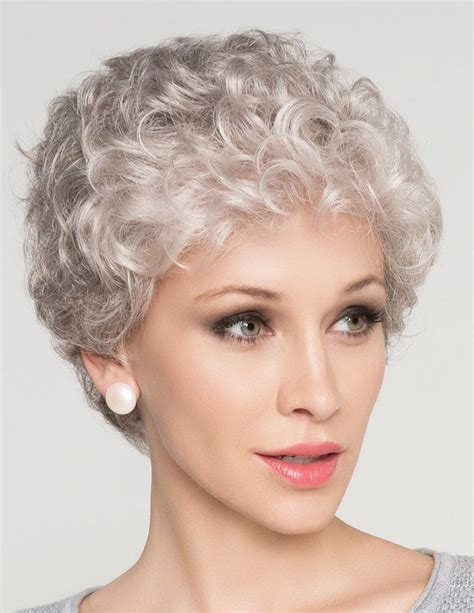As we age, our hair can undergo various changes, including thinning, graying, and hair loss. These changes are perfectly natural and affect many elderly women. However, if you’re looking to enhance your appearance and regain your confidence, wigs can be an excellent solution.

Benefits of Wigs for Elderly Women
- Conceal hair loss: Wigs can effectively cover up thinning hair or bald spots, allowing you to feel more confident and comfortable in social situations.
- Enhancing volume: Wigs can add volume to thin hair, giving you a fuller, more youthful appearance.
- Experimenting with new styles: Wigs offer endless styling possibilities, allowing you to try out different colors, lengths, and textures without permanently altering your own hair.
- Protection from damage: Wigs can protect your natural hair from sun damage, heat styling, and other environmental factors.
Types of Wigs
There are two main types of wigs available in the market: synthetic and human hair wigs.
- Synthetic wigs: Made from artificial fibers, synthetic wigs are affordable, easy to care for, and come in a wide range of colors and styles. However, they may not look as natural as human hair wigs.
- Human hair wigs: Made from real human hair, human hair wigs provide the most natural look and feel. They are more expensive than synthetic wigs but can last longer with proper care.
Finding the Perfect Fit
Finding the perfect wig fit is crucial for comfort and confidence. Here are some key factors to consider:
- Cap size: Wigs come in different cap sizes to accommodate different head sizes. Measure your head circumference to determine the correct cap size for you.
- Cap construction: Different cap constructions offer varying levels of comfort and breathability. Monofilament caps create a natural scalp appearance, while lace caps are thin and airy.
- Hair length and density: The length and density of the wig should complement your face shape and personal preferences. Consider your height, facial features, and lifestyle when selecting the desired hair length and density.
Caring for Your Wig
Proper care of your wig is essential to maintain its lifespan and appearance. Here are some maintenance tips:
- Washing: Depending on usage, wigs may need to be washed every few weeks or months. Use a gentle shampoo specifically designed for wigs and avoid harsh detergents.
- Conditioning: Regular conditioning keeps the wig soft and manageable. Use a wig conditioner to detangle and hydrate the hair.
- Styling: You can use heat styling tools on human hair wigs, but do so with caution and use a heat protectant spray. Avoid heat styling synthetic wigs, as it may damage the fibers.
- Storage: When not in use, store your wig on a wig stand or in a protective bag to prevent tangles and damage.
Common Mistakes to Avoid
- Choosing a wig that’s too small or too big: An ill-fitting wig can be uncomfortable and look unnatural. Make sure to measure your head circumference and choose the appropriate cap size.
- Wearing a wig all the time: It’s important to give your scalp a break from wearing a wig to prevent irritation and scalp problems.
- Using harsh chemicals: Avoid using harsh shampoos, conditioners, or styling products on your wig. These chemicals can damage the fibers and shorten the wig’s lifespan.
- Styling synthetic wigs with heat: Heat styling can melt or damage synthetic fibers. Use a wig cap or a heat protectant spray when using heat styling tools on human hair wigs.
- Ignoring maintenance: Regular care is crucial for keeping your wig looking its best. Follow the manufacturer’s instructions for washing, conditioning, and styling your wig.
Resources and Support
- Wig consultation: Many salons and wig boutiques offer wig consultations to help you find the perfect fit and style for your needs.
- Online wig retailers: There are numerous reputable online wig retailers that offer a wide selection of wigs at various price points.
- Support groups: Connecting with other wig wearers can provide valuable advice and support. Consider joining online or in-person support groups.
Conclusion
Wigs can be a transformative tool for elderly women, helping them regain confidence and enhance their appearance. By choosing the right type of wig, finding the perfect fit, and providing proper care, you can enjoy the benefits of wigs for years to come.
